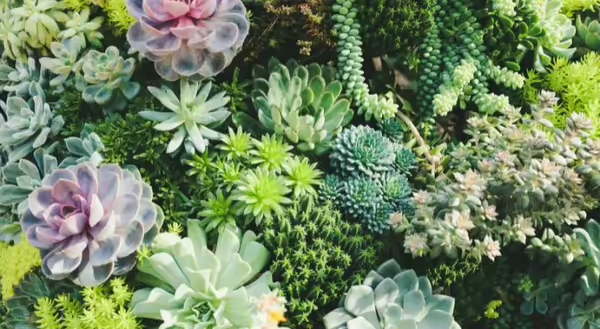
Succulents are among the easiest plants to grow, having adapted to hot, dry conditions by having the ability to store and conserve water in their fleshy stems and leaves. Whether you are looking to brighten up your home with a few potted succulents or create a stunning outdoor succulent garden, they are sure to thrive with minimal fuss. Available in a variety of shapes, colors, sizes, and textures, along with their ability to withstand various environmental conditions and their limited maintenance requirements, these plants are a favorite among seasoned gardeners and beginners alike. Plus, the ease of propagating new plants from cuttings or offsets means you can easily expand your succulent collection with little effort.
When growing succulents indoors, place them in a bright sunny location such as a south or west window. A good indicator of insufficient light is leggy, lighter in color, and weakened stems. They are happiest at normal household temperatures of 65-75° Fahrenheit, but the soil may dry out more quickly.
Succulent planters can be moved outdoors after the risk of frost has passed, usually around Memorial Day. Transition plants to the outdoors by placing them in a shady place for a few days and slowly moving them to a sunnier location. During the summer, they can tolerate temperatures ranging from 40° to 90° Fahrenheit. Move plants back indoors in late September before nighttime temperatures drop below 50° Fahrenheit.
As simple as they are to grow, succulents easily fall victim to too much love from their owners through overwatering, resulting in suffocation and rotting of their roots. Before watering, check the soil and look for signs on the plants—is it completely dry and lightweight when lifted? Or does it have soft, slightly wrinkly stems and leaves? In most indoor conditions, succulents will need to be watered once a week or less. The frequency and amount of water depend on the time of year and the size of the plant and container. Let the soil completely dry out between watering, and when watering, soak the soil completely, allowing excess water to drain from the bottom of the container.
Many succulents can easily be propagated to create plants for family or friends. Research online how to successfully propagate different types of succulents through offsets, tip cuttings, or leaf cuttings.
Due to the thickness of the stems and leaves, very few pests or diseases affect succulents. Wipe off mealy bugs with rubbing alcohol and use a heavy stream of water to spray off aphids from the tips of plants.
Whether you are looking for indoor plants or additions to your garden, there is a succulent to fill the need. Dish gardens of creative containers such as a large conch shell or glass bowls filled with succulents make unique arrangements to display on a table or desk. Plant perennial succulents, such as sedum, hens, and chicks, or prickly pear cacti into a rock or xeriscape garden.